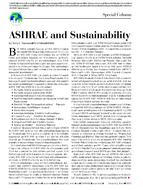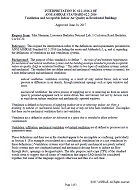Window solar gain can strongly influence building energy consumption and peak cooling load. Shading devices such as venetian blinds, roller blinds, and drapes are routinely used to control solar gain. There is a strong need for models that allow shading layers to be included in glazing system analysis. This paper presents methods by which existing solar optical models for systems of specular glazing layers can be extended to include the effect of layers that create scattered, specifically diffuse, radiation in reflection and/or transmission. Spatially averaged optical properties (i.e., “effective†optical properties) can be used to characterize shading layers, including their beam-diffuse split. Solution techniques can be formulated on the basis of matrix reduction. However, an alternative technique has been developed with the goal of computational simplicity and speed. These attributes are important in the context of hour-by-hour building energy analysis. Sample calculations are presented.
Citation: ASHRAE Trans. vol. 111, pt. 2, paper no. QC-06-001 (RP-1311), p. 3-12
Product Details
- Published:
- 2006
- Number of Pages:
- 10
- File Size:
- 1 file , 1.9 MB
- Product Code(s):
- D-28722


